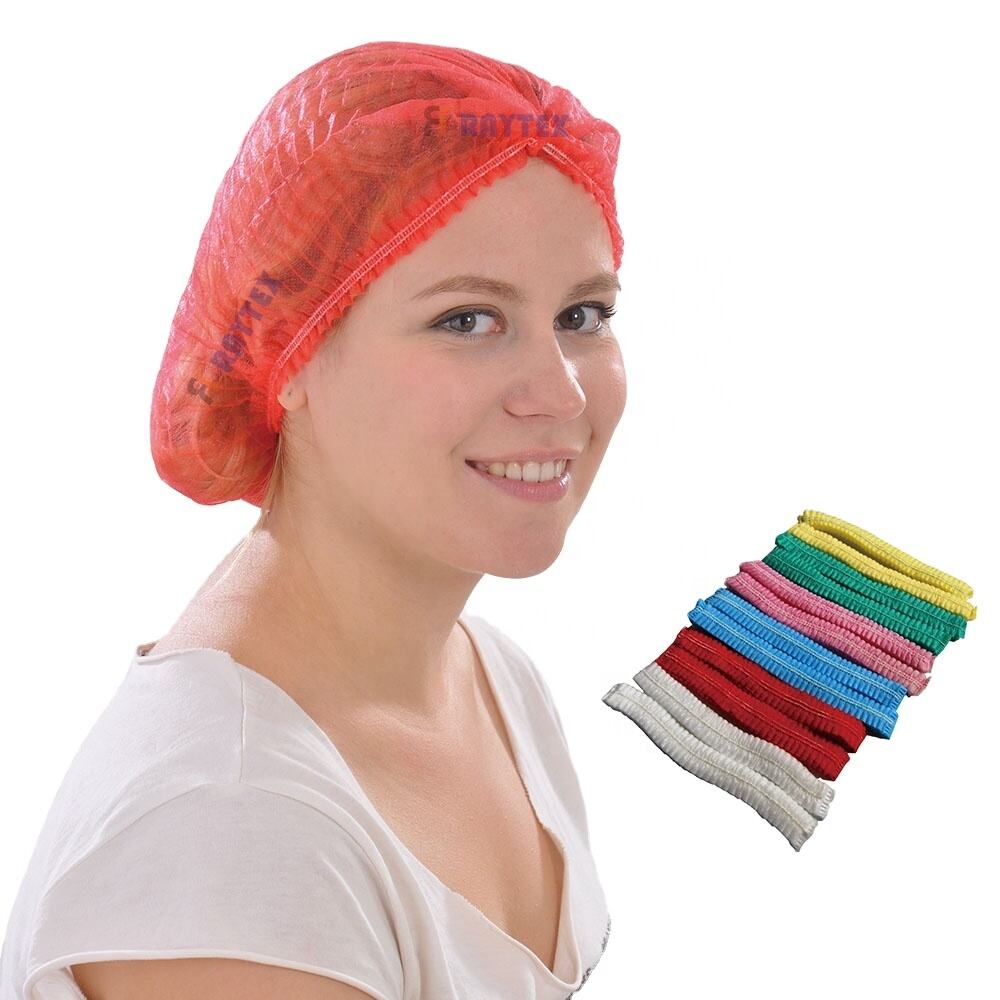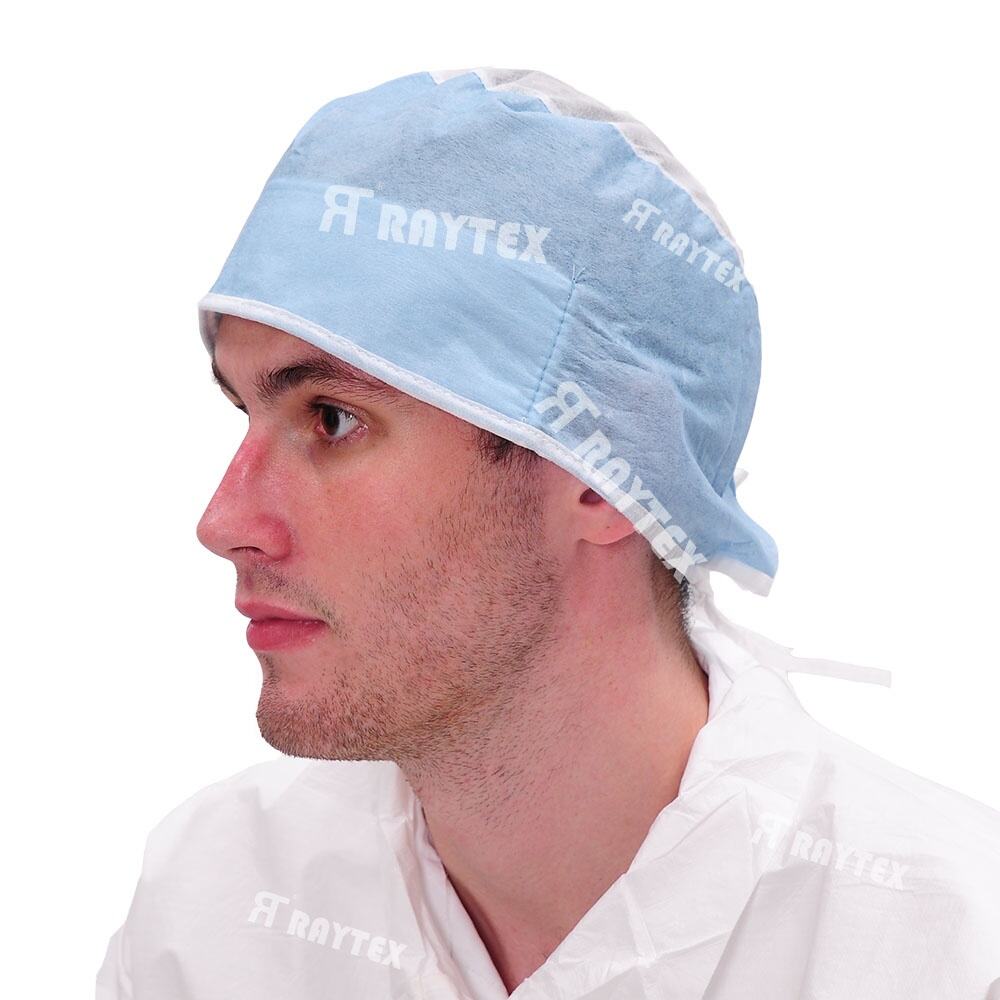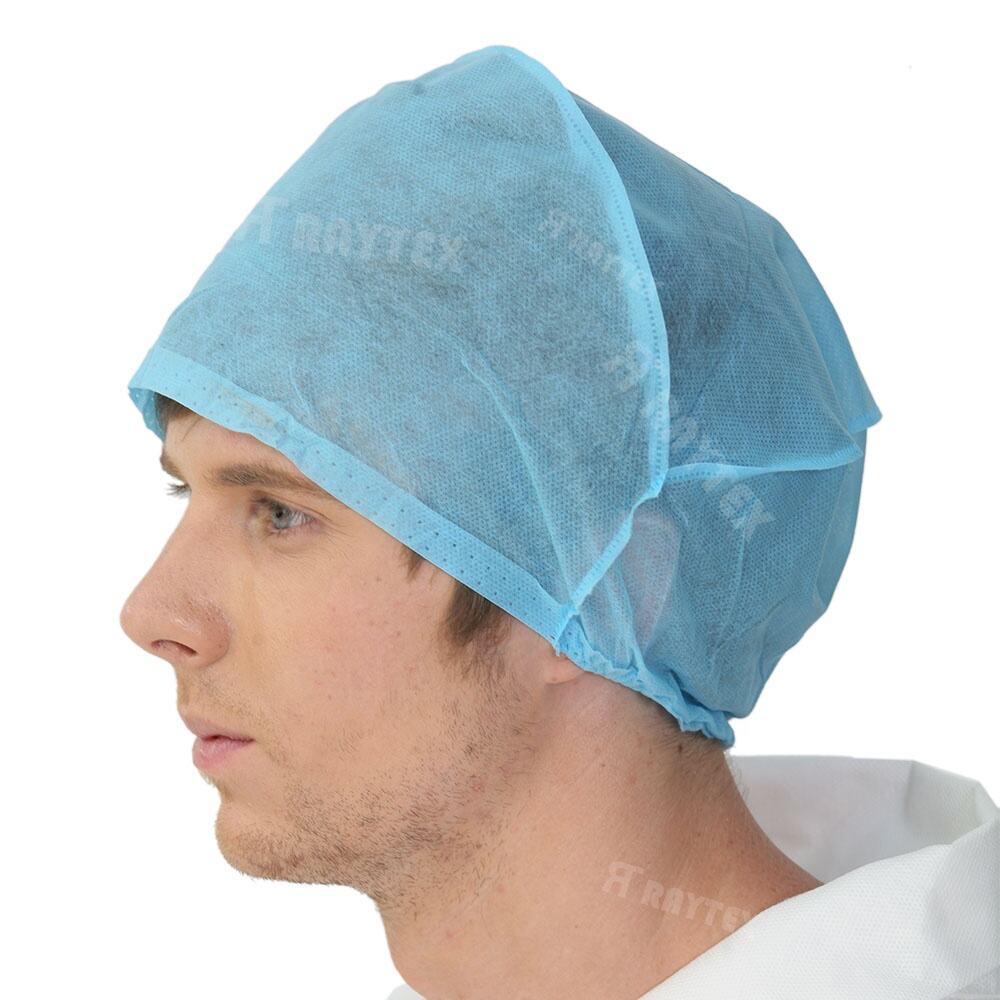Еднократни капи за поштенски работници кои ги манипулираат со пошта со биолошки опасни материи се специјални заштитни облеки дизајнирани да го заштитат главата, косата и вратот од изложување на биолошки опасности, како што се бактерии, вируси, токсини и други потенцијално инфективни материјали кои може да се наоѓаат во контаминираната пошта. Овие капи се критичен дел од личната заштитна опрема (PPE) за поштенски работници, кои имаат ризик од изложување на биолошки опасни супстанци при сортирањето, манипулирањето и доставувањето на пошта, особено во случаи на сумњиви пакети или потврдени инциденти со биолошки опасности. Капите се изработени од лаган, отпорен на течности материјал како што е SMS (спанбонд-мелтбленд-спанбонд) полипропилен или полиетилен, кои осигуруваат сигурна бариера против прскање на течности, аерозоли и честички што содржат биолошки агенти. Материјалот е избран поради неговата способност да отпорува на проникнување од телесни течности, хемикалии и други течности кои може да носат патогени, при тоа останувајќи дисајен за да се спречи прегревање за време на подолго носење. Карактеристики на дизајнот вклучуваат целосно покривање кое го опфаќа главата, косата и вратот, со еластичен отвор околу лицето за да осигури сигурно запечатување и да спречи јази низ кои може да навлезат контаминанти. Многу капи се дизајнирани така што можат да се носат заедно со друга заштитна опрема, како што се заштитни наочари, штитови за лице или респиратори, каде што отворот за лицето е димензиониран така што овозможува носење на овие уреди без да се наруши заштитната бариера на капата. Еластичниот раб околу лицето исто така помага капата да се запечати на кожата, со што се намалува ризикот од влез на контаминиран воздух или честички во капата. Капите обично се еднократни за да се елиминира ризикот од крстосана контаминација, бидејќи повторната употреба може да доведе до ширење на патогени доколку не се дезинфектуваат правилно — процес кој често е непрактичен во брзиот поштенски работен процес. Често се испорачуваат во индивидуални стерилни пакувања, за да останат слободни од контаминанти пред употреба, а лесно се ставаат и свикуваат за да се минимизира контактот со потенцијално контаминирани површини. Соодветството со стандардите за безбедност е клучно, а овие капи ги исполнуваат регулативите како што се ASTM F1671 (стандардна метода за тестирање на отпорност на материјали на проникнување од патогени преку крв) и EN 14126 (заштитна облека против инфективни агенти), осигурувајќи дека нудат ефективна заштита од биолошки опасности. Тие исто така се тестираат за дисајност, отпорност на кидање и отпорност на течности за да се осигури нивната сигурна употреба во реални услови. Со обезбедување на еднократни капи за поштенските работници кои манипулираат со биолошки опасна пошта, работодавачите можат да ги заштитат своите вработени од изложување на потенцијално животнозачудни патогени, да осигураат соодветност со регулативите за професионална безбедност како што е OSHA-овиот Стандард за патогени преку крв (29 CFR 1910.1030), и да го минимизираат ризикот од епидемии или инциденти со биолошки опасности на работното место, со што се одржува безбедна и сигурна работна средина.


